Garlic Chives
Allium tuberosum
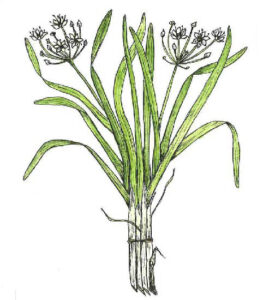
Chinese leeks or oriental garlic (English), 韭菜 (jiǔ cài, Mandarin), हरा लहसुन (Hara lehsun, Hindi), લસણ ચિવ્સ (Lasaṇa civsa, Gujarati), toon (Somali), maroi nakuppi Manipuri, India
Native to China, garlic chives are used in European and American cuisine as a substitute for garlic and onion. It is often referred to as ‘wild chives’ because the hardy plant has become naturalized throughout Europe and the Americas. The leaves are commonly found in European egg dishes such as quiche, and they are also kept in pots as an ornamental due to the showy white flowers. Garlic chives are common in Florida herb gardens because the leaves can be harvested year round.
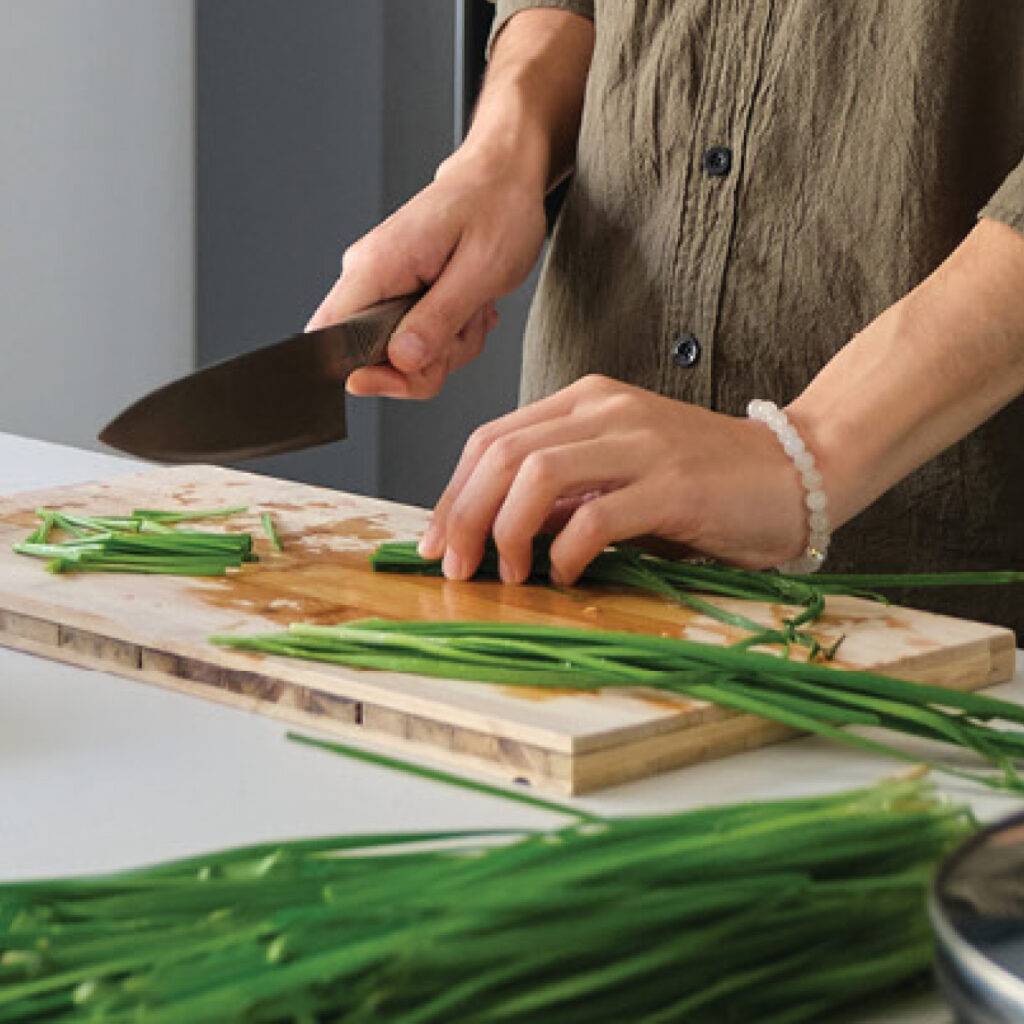
Garlic chives originated in southwestern China where they have been used for over 4000 years. They grow wild throughout northern China and Mongolia, and they spread into Europe where they became naturalized and widespread throughout the mainland. They were introduced to teh Americas through colonization, and the plant has become well-established throughout North America. In Australia it has been classified as an invasive species. Because of its abundance and hardy nature, iIt is often referred to as ‘wild garlic’ or ‘wild chives.’ Today they are commonly used for food in Asia, Europe, and the United States. They are popular in herb gardens throughout Europe and the U.S. where they are often used in place of chives because they stay green in the winter, and the leaves can be harvested year round.
Garlic chives have been grown throughout East Asia for several centuries, and the flat, strap-like leaves taste more like garlic than chives. Garlic chives are a main ingredient in many recipes throughout Asia such as pad Thai; Korean buchu-kimchi; Persian sabzi (herb) dishes; Chinese stir-fries; Japanese niratama (chives and egg dish). They are also blanched in long strips and eaten like a noodle. In India garlic chives are used as a substitute for garlic and onion, and it is known as maroi nakuppi. In Japan they are often added to miso soup, and in Korea they are used i kimchi. European and American cuisine most often uses garlic chives chopped as a fresh herb in egg recipes, fresh in salads and salad dressings, and as a fresh garnish on hot and cold dishes. Garlic chives are also grown in pots as an ornamental, and the bright showy white flowers are highlighted in Vincent Van Gogh’s painting Flower pot with Garlic Chives (1887).
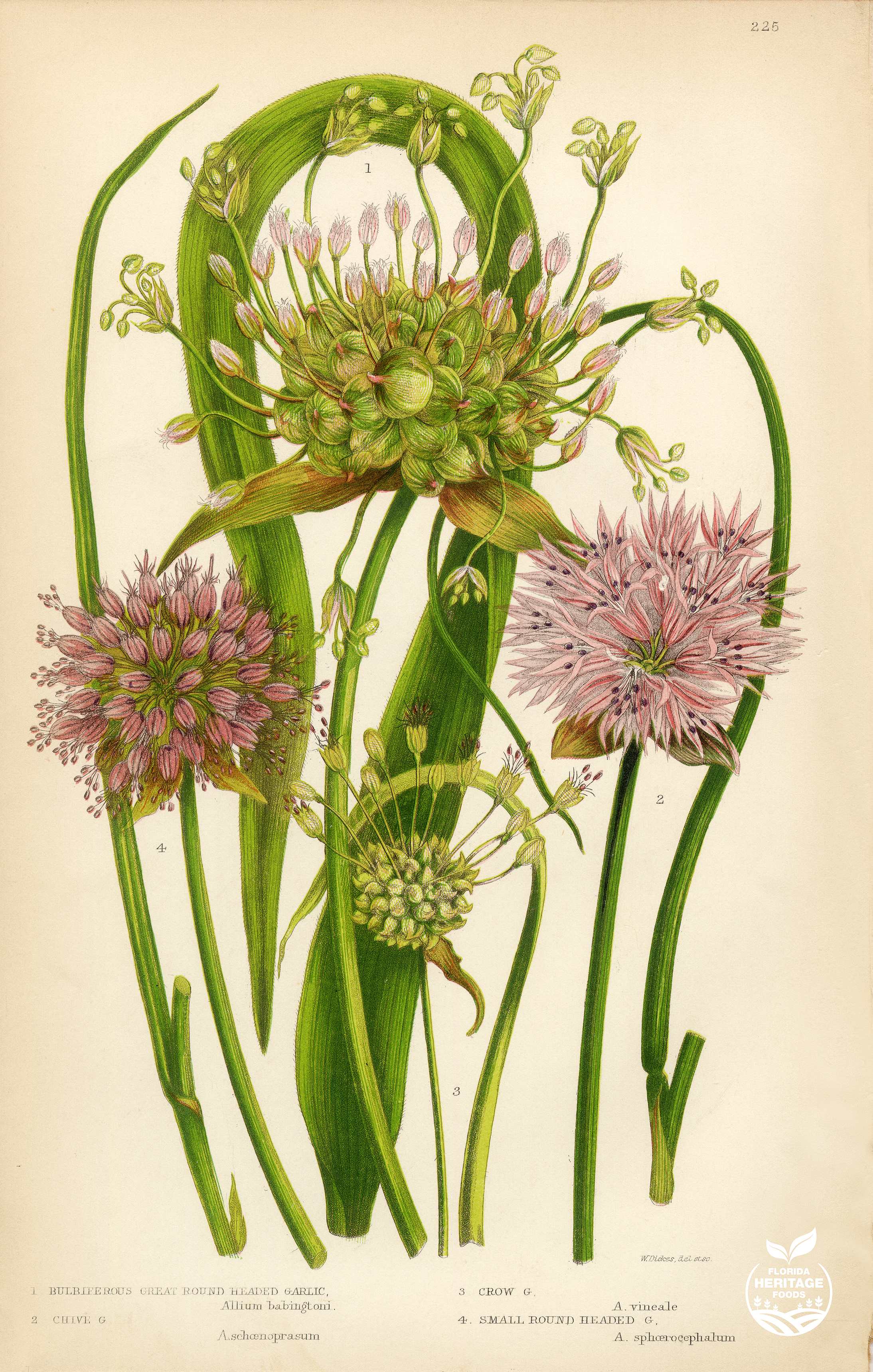
Garlic chives are rich in vitamins B1, B2, and C; carotene, calcium, and iron
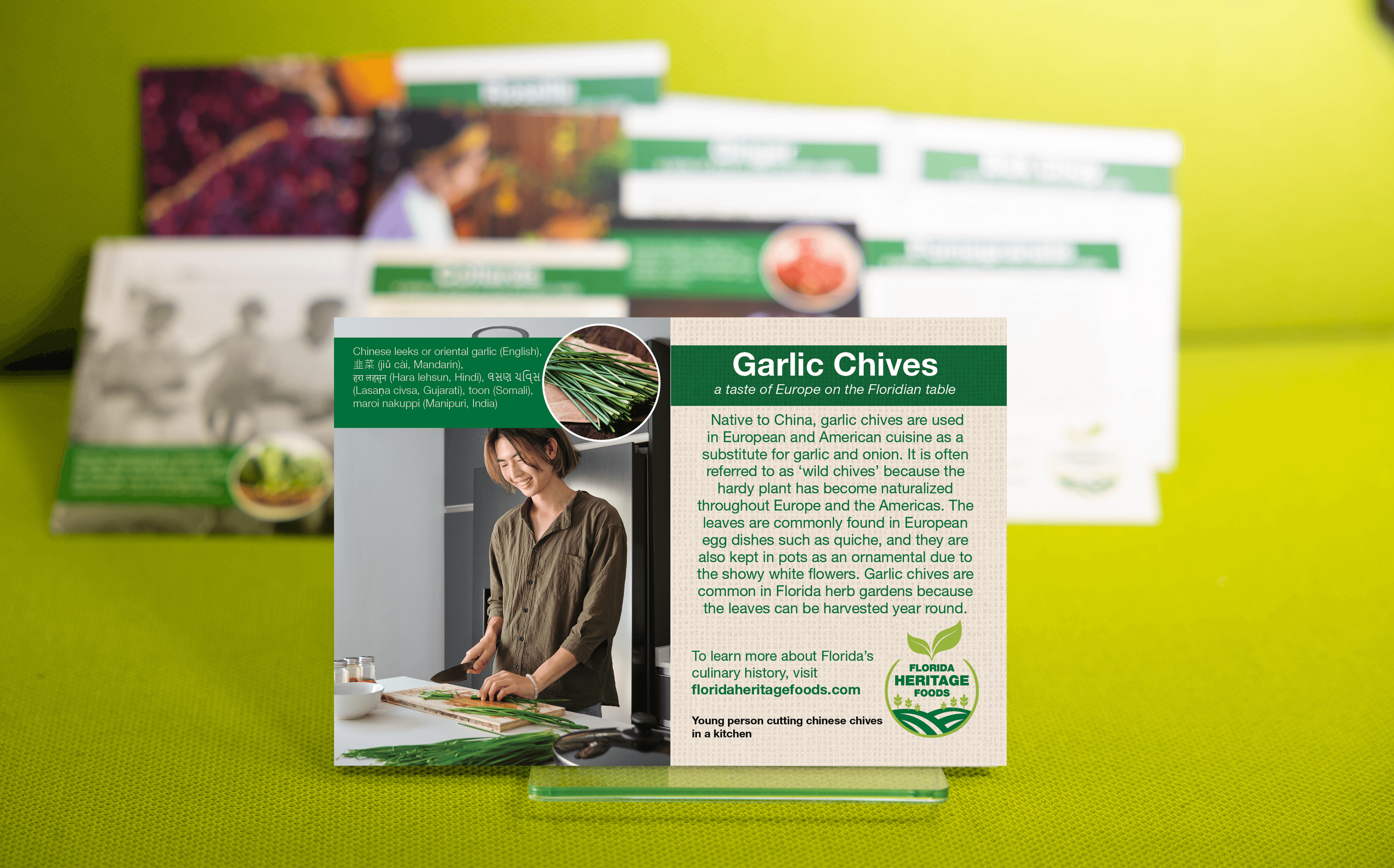

Direct sow seeds or divide existing chives year-round. They can be grown in the garden or kept in pots in a sunny location. Allow to flower and go to seed. Garlic chives may be harvested and enjoyed year-round.
To plan, a heritage garden, download the ‘Planning a Florida Heritage Garden (PDF).’
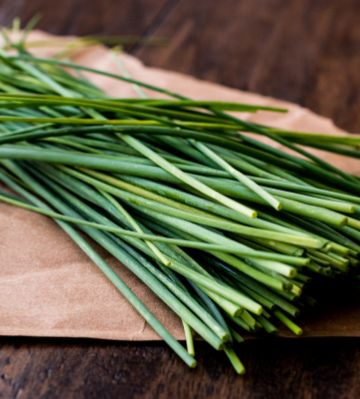
Santa Fe College Partnered with Multiple Organizations in a Collaborative Effort to Bring Awareness of the Heritage Plants In Florida.
BY CULTURAL HISTORY
BY GROWING SEASON
DROUGHT TOLERANT PLANTS
Commitment to Equal Access and Equal Opportunity
Santa Fe College is committed to an environment that embraces diversity, respects the rights of all individuals, is open and accessible, and is free of harassment and discrimination. For more information, visit sfcollege.edu/eaeo or contact equity.officer@sfcollege.edu.
SACSCOC Accreditation Statement
Santa Fe College is accredited by the Southern Association of Colleges and Schools Commission on Colleges (SACSCOC). For more information, visit sfcollege.edu/sacscoc.
